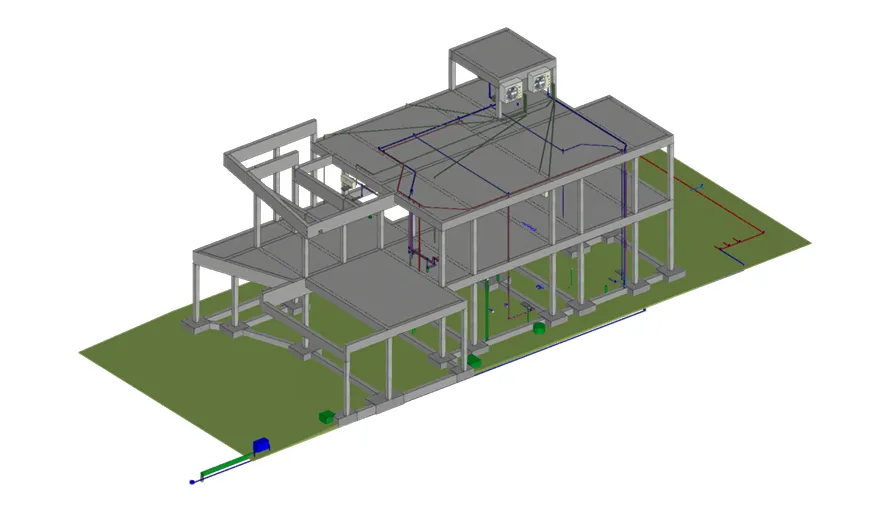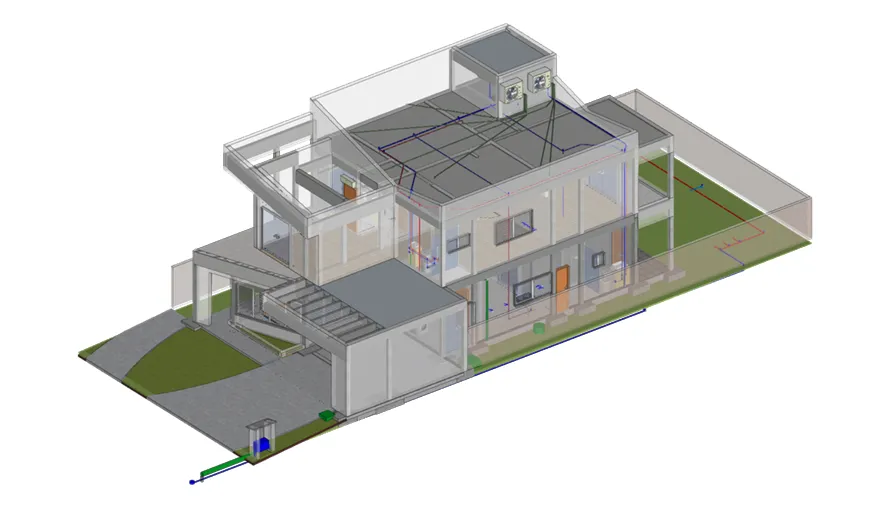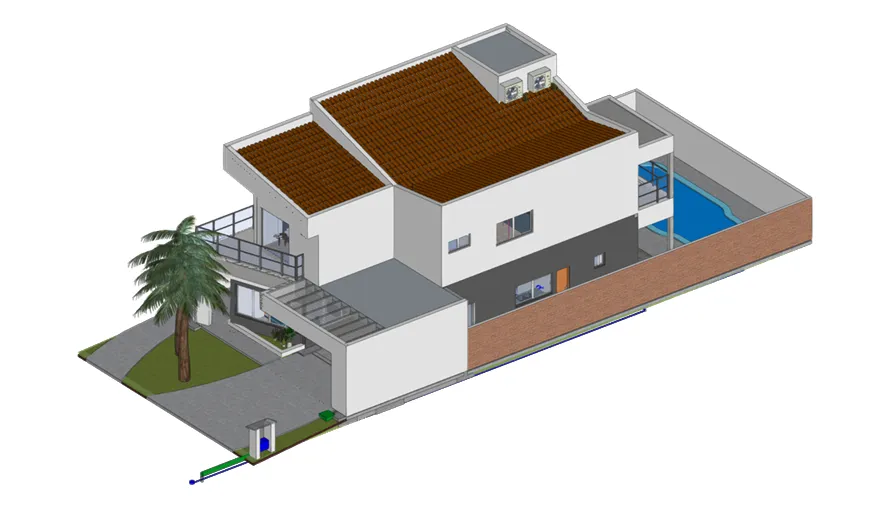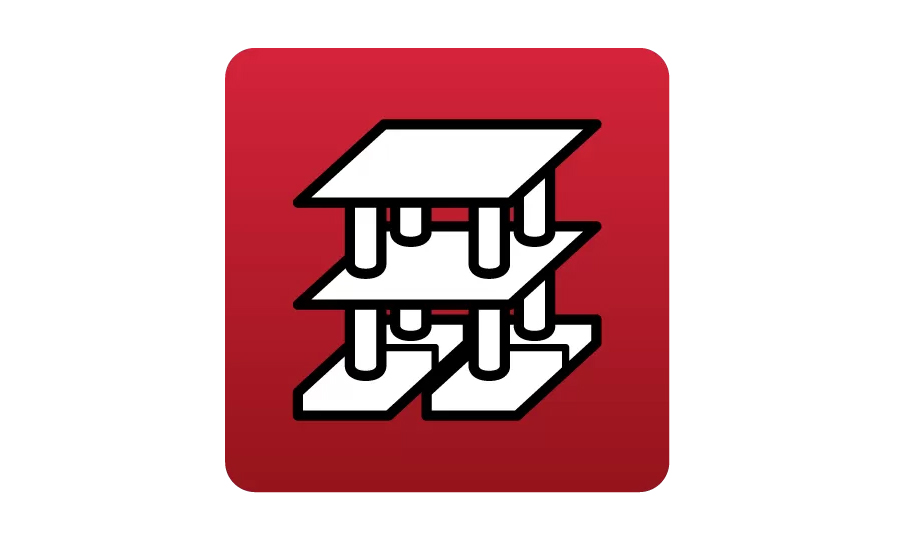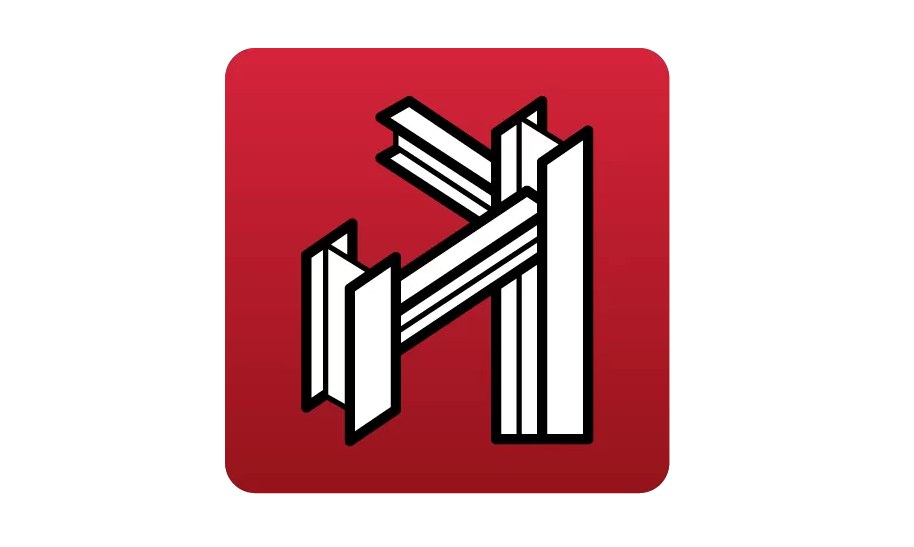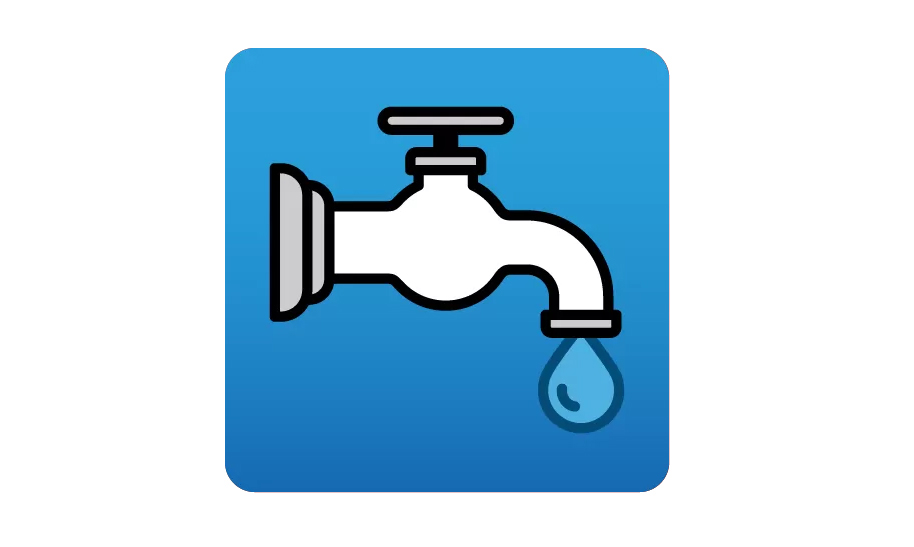
How can a federated BIM model strengthen the collaboration of your projects
In complex projects that include multiple disciplines, the federated BIM model is very helpful
The federated BIM model offers a number of advantages, especially in projects with large teams
Projects can be developed using any BIM modelling tool that can export IFC files

In the AEC industry, collaboration plays a crucial role in the smooth running of projects. At CYPE, we are aware of this factor and that is why we implement an approach that manages to integrate all aspects of a project to have a complete and integrated vision in a single place. We refer to federated BIM models, the union of different specialised digital models that work as interconnected but independent layers, maintaining their original identity while they are visualised and analysed together.
- Learn about our BIM solutions to create a federated BIM model.
- Find out more about the community and shared projects in BIMserver.center.
Advantages of using a federated BIM model
The federated BIM model offers several advantages, especially in projects with large, multidisciplinary teams. Firstly, it improves the overall understanding of the project by providing a comprehensive vision that makes it easier for everyone involved in the project to access the information. It also allows real-time coordination, so that no work is duplicated, which significantly increases the team’s efficiency.
This methodology results in more informed decision-making, which improves planning coordination. Another benefit is the automatic detection of 3D clashes between disciplines, which can anticipate and detect potential problems before they occur. This reduces potential errors and conflicts in later phases. The federated BIM model also optimises project approval processes by streamlining the review and validation of each stage of a project, resulting in greater efficiency and greater control and savings in time and resources.
In complex projects involving multiple disciplines, the federated BIM model is particularly useful. It allows the models from each of the disciplines and their respective programs to be integrated, for example, when working with CYPE applications such as CYPE Architecture, CYPECAD, CYPEPLUMBING, CYPEHVAC and CYPEFIRE, in a collaborative ecosystem with a unified view while maintaining the independence of each component.
Boosting collaboration with Open BIM
Working with Open BIM encourages collaboration by enabling projects based on open standards such as IFC and BC3. These standards make it easier to create federated BIM models, as well as interoperability between different tools and disciplines. To take full advantage of these open standards, CYPE developed BIMserver.center, a platform that functions as a common data environment (CDE) specifically designed for BIM projects.
Our platform provides a cloud-based collaborative environment that hosts and coordinates multiple independent files, resulting in a federated model. This system enables efficient storage, management and sharing of project information, improving collaboration between team members, version control and accessibility from any device.
In addition, BIMserver.center goes beyond a traditional CDE, and incorporates professional social networking features for the AEC sector. This makes it easier for professionals to connect with each other and generate business opportunities, which promotes a collaborative ecosystem in the AEC industry.
Developing a federated BIM model
The process of creating a federated BIM model using CYPE tools and BIMserver.center is carried out in several stages, each focusing on a specific aspect of the construction project. To get started, for example, the architectural model can be developed using CYPE Architecture, although any BIM modelling tool that can export IFC files can be used. Once the model is created, it is exported to BIMserver.center, allowing other team members to access and use it as a basis for their designs. The structural design is then carried out using CYPECAD. By incorporating the architectural model from BIMserver.center, the geometry of the structure can be automatically generated. In this phase, the relevant features of the structural project are defined, such as the selection of codes and materials, as well as details related to environmental conditions. Once completed, this structural model is exported back to BIMserver.center as a new project contribution.As for the design of the MEP systems, CYPEPLUMBING can be used for plumbing systems. Previous models are imported as a reference, which facilitates their development. Once finished, they are exported again to BIMserver.center. Subsequently, the HVAC system is developed with CYPEHVAC, following a similar import, design and export process. Finally, the fire protection study is carried out using CYPEFIRE, using the architectural model to extract the spaces from the BIM model.
The end result is a complete federated model visible in BIMserver.center, which integrates architecture, structure and MEP systems. This model can be viewed both on the platform and in the CYPE tools used in the project, which also act as BIM viewers. It is important to note that contributions imported from a specific program can only be edited in the program in which they were created, which guarantees the integrity and traceability of each component of the federated model.
Federated BIM models represent a qualitative leap in the way we work with AEC projects, offering a comprehensive solution to the collaborative challenges faced by the industry. Through the integration of different disciplines into a system of interconnected but independent layers, this methodology not only improves efficiency and accuracy but also encourages a collaborative culture.



